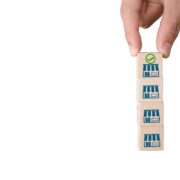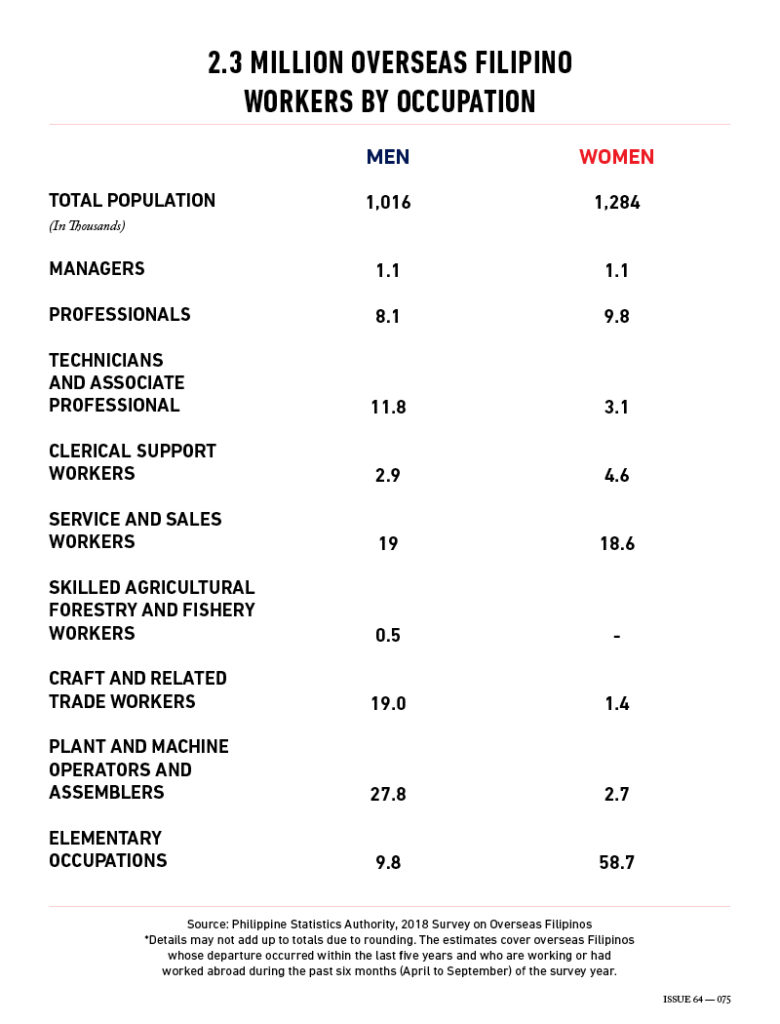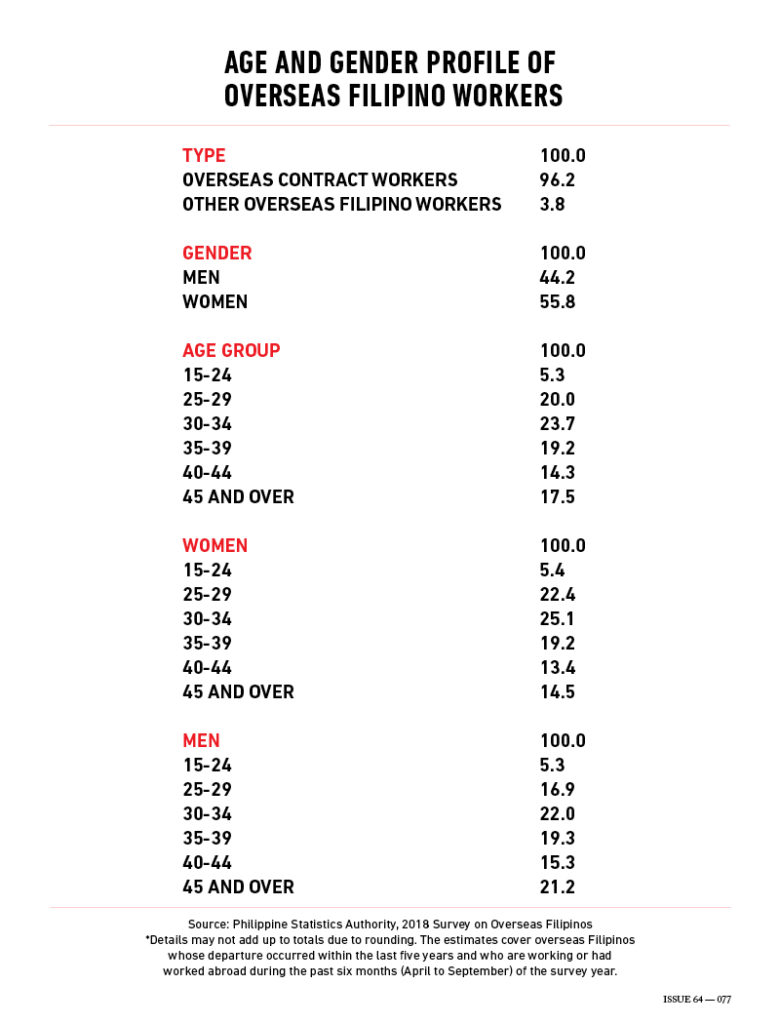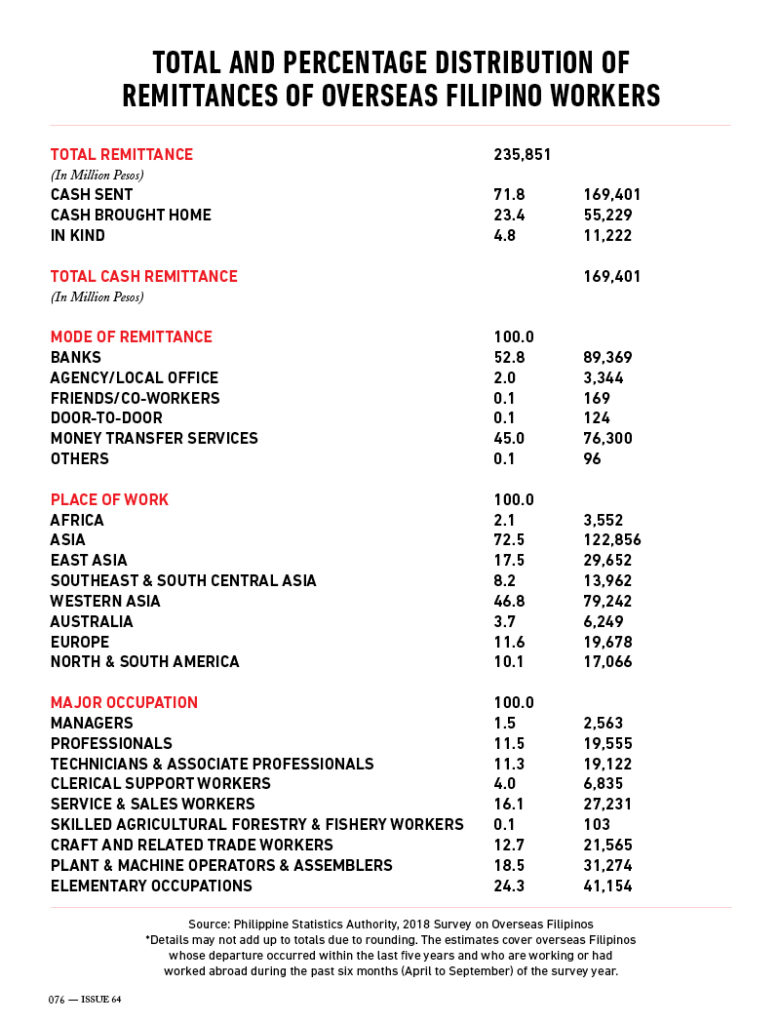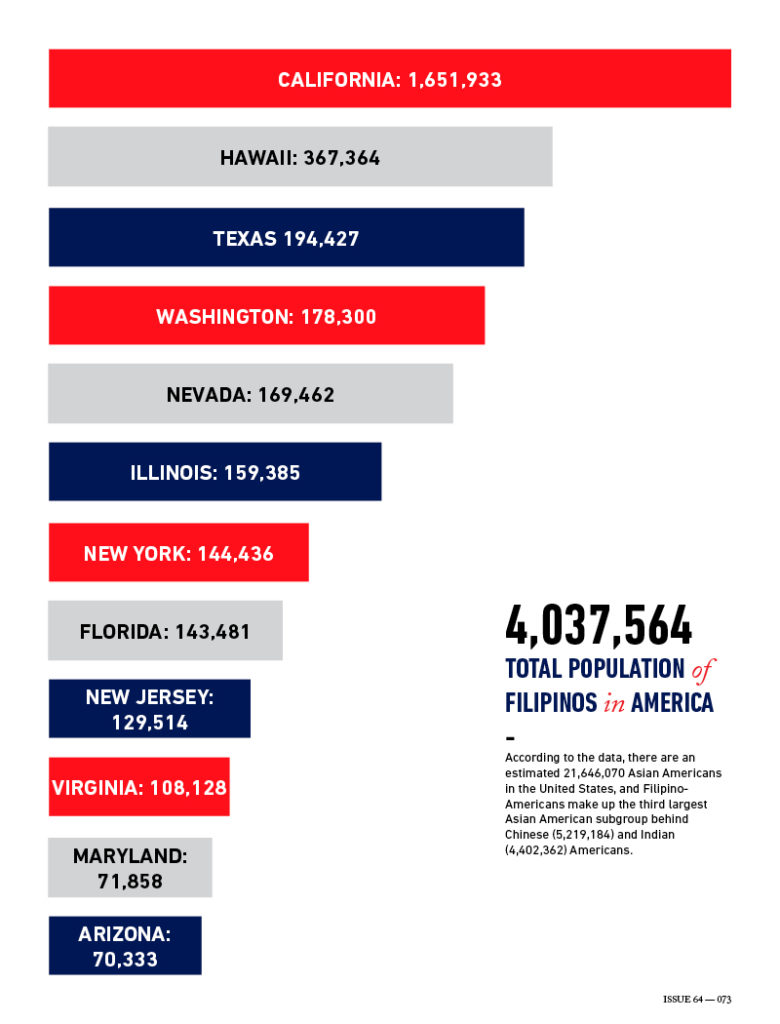The number of Overseas Filipino Workers (OFWs) who worked abroad at anytime during the period April to September 2018 was estimated at 2.3 million. Overseas Contract Workers (OCWs) with existing work contract comprised 96.2 percent of the total OFWs during the period April to September 2018. The rest (3.8%) worked overseas without contract (Table 1).
There were more females than males among the OFWs, with the female OFWs comprising 55.8 percent of the total OFWs. Female OFWs were generally younger than male OFWs, with about half (47.5%) of the female OFWs belonging to the age group 25 to 34 years.
In comparison, male OFWs in this age group made up 38.9 percent. Male OFWs aged 45 years and older accounted for 21.2 percent of all male OFWs while their female counterparts in this age group made up 14.5 percent (Table 1).
Among occupation groups, elementary occupations (37.1%) was the biggest group of OFWs. Other large occupation groups were the service and sales workers (18.8%) and plant and machine operators and assemblers (13.8%). More than half of the female OFWs were in elementary occupations (58.7%). Among the male OFWs, the largest groups were plant and machine operators and assemblers workers (27.8%) (Table 2).
CALABARZON reported the biggest share of OFWs with 17.9 percent followed by Central Luzon with 14.3 percent, and the National Capital Region and Ilocos Region each with 9.7 percent share. Fifty percent of the total OFWs came from these four regions (Table 2).
One out of four (24.3%) OFWs worked in Saudi Arabia, which remained to be the top destination of OFWs in April to September 2018. OFWs who worked in United Arab Emirates comprised 15.7 percent. Hong Kong (6.3%), Kuwait (5.7%),Taiwan (5.5%) and Qatar (5.2%) were the other popular destinations of OFWs (Table 3).
The total remittance sent by OFWs during the period April to September 2018 was estimated at 235.9 billion pesos. These remittances included cash sent home (169.4 billion pesos),cash brought home (55.2 billion pesos) and remittances in kind (11.2 billion pesos). The majority of OFWs sent their remittance through banks (52.8%) while the rest through money transfer services (45.0%), agencies or local offices (2.0%) and the rest at 0.1 percent, respectively (Tables 4 and 5).
The remittances sent by OFWs to their respective families may just be a part of the total salary received by the OFWs. Data on remittances in this report are based on the answers given by the survey respondents to the questions on how much cash remittance was received by the family during the period April to September 2018 from a family member who is an OFW and how much cash did this member bring home during the reference period, if any. Further, if the family received goods and products sent by this OFW during the reference period, then the imputed value of such goods was included in his/her total remittance (Tables 4 and 5).
Technical Notes
The data presented in this press release were taken from the 2018 Survey on Overseas Filipinos (SOF). The SOF aims to derive national estimates on the number of Overseas Filipino Workers, their socio-economic characteristics and the amount and mode of remittances, in cash and in kind, received by their families.
The OFWs covered in this report were those aged 15 years old and over and working abroad during the period April 1, 2018 to September 30, 2018.
OFWs include overseas contract workers (OCWs) who were presently out of the country during the reference period to fulfill an overseas contract for a specific length of time or who were presently at home on vacation during the reference period but still had an existing contract to work abroad, and other Filipino workers abroad with valid working visa or work permits. Those who had no working visa or work permits (tourist, visitor, student, medical, and other types of non-immigrant visas) but were presently employed and working full time in other countries were also included.
In this report, the remittances sent by OFWs to their respective families may just be a part of the total salary received by the OFWs. Data on remittances in this report were based on the answers given by the survey respondents to the questions on how much cash remittance was received by the family during the period April to September 2018 from a family member who is an OFW and how much cash did this member bring home during the reference period, if any. Further, if the family received goods and products sent by this OFW during the reference period, then the imputed value of such goods was included in his/her total remittance.
Starting April 2016 round of the Labor Force Survey (LFS), the 2013 Master Sample (MS) Design has been adopted. The number of sample households is around 45,000. The SOF, being a rider of the LFS, has adopted the 2013 MS starting October 2016. Careful evaluation must be made in comparing the results of the 2018 SOF with the SOF data prior to the implementation of the 2013 MS.
The 2012 Philippine Standard Occupational Classification (PSOC) was adopted starting October 2016. The 1992 PSOC had been used prior to October 2016.





